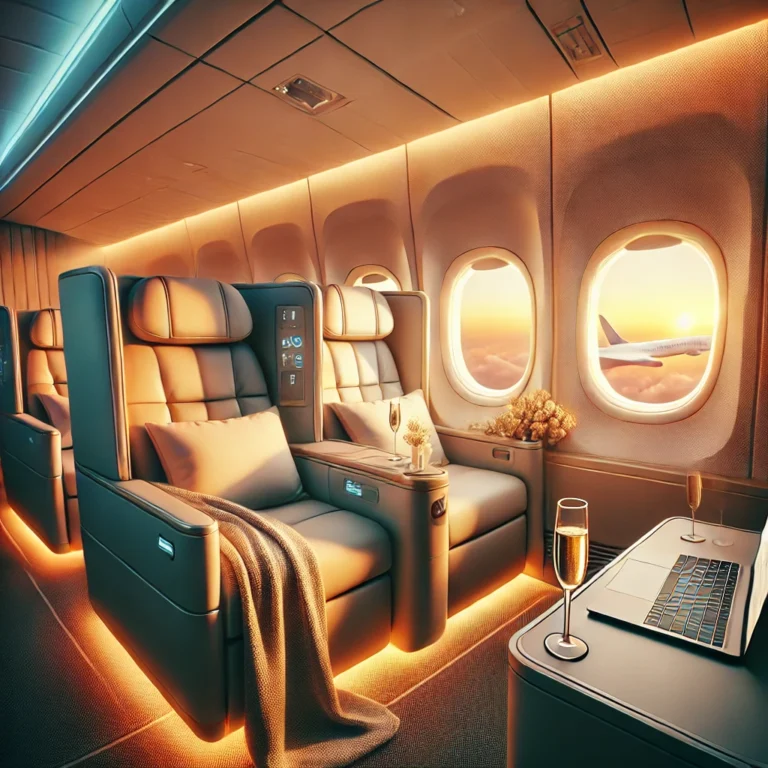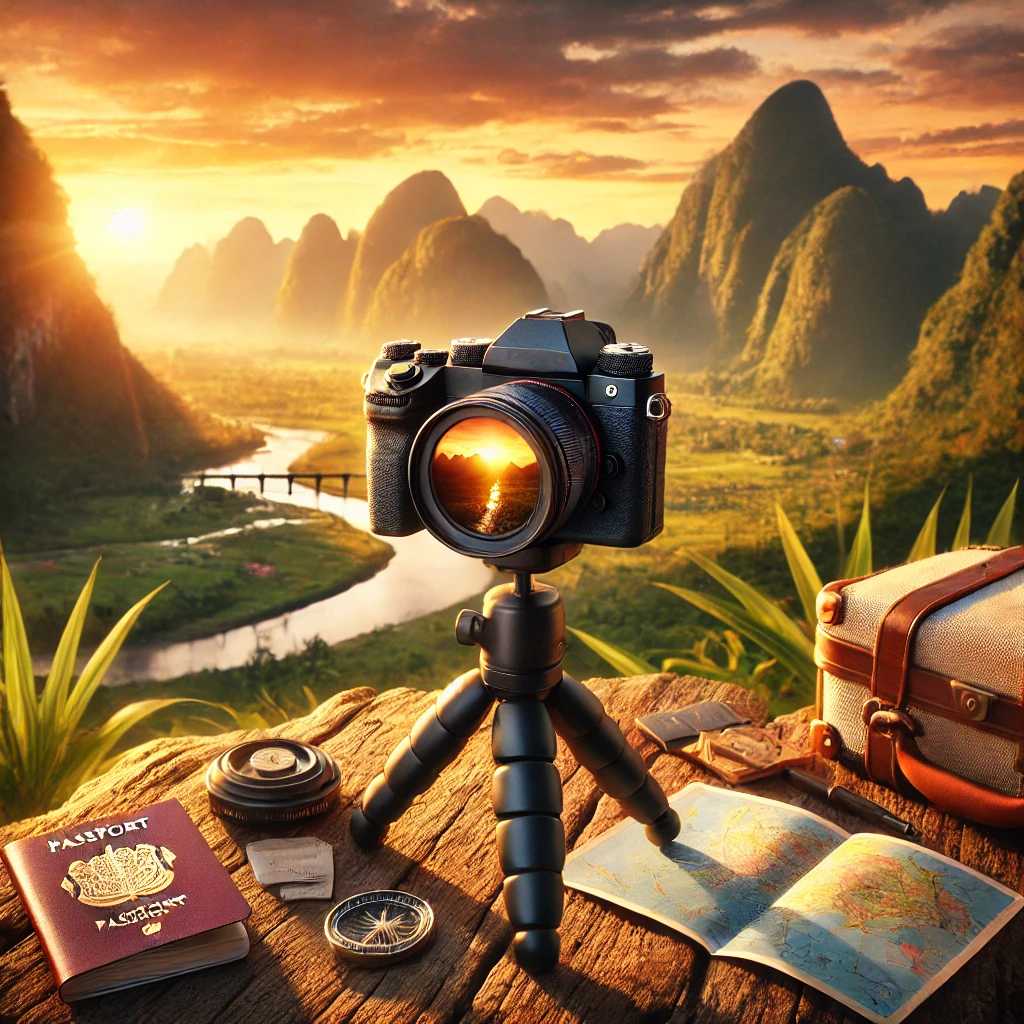
Why Choosing the Right Travel Camera Matters
Traveling opens up incredible opportunities to capture breathtaking landscapes, vibrant cityscapes, and memorable moments.
But the experience of photographing these moments depends largely on the camera you carry.
With the right travel camera, you can freeze these moments in time, bringing your memories back to life long after the trip is over.
In this guide, we’ve curated a list of the best travel cameras, ranging from budget-friendly picks to high-end options for professional photographers.
Whether you’re a casual traveler, a vlogger, or a professional seeking top-quality shots, these cameras cater to every type of adventurer.
Camera Selection Criteria: How We Chose the Best Travel Cameras
Choosing the best travel cameras requires a deep understanding of what travelers need most when capturing moments on the go.
Travel photographers often face varying conditions, from brightly lit landscapes to dimly lit city streets, so a versatile camera that adapts to these different settings is key.
Here’s a breakdown of the essential criteria we used to create this list:
1. Image Quality
- Resolution (Megapixels): We prioritized cameras with high-resolution sensors, as they allow for sharper, more detailed photos. Cameras with higher megapixels are better for cropping photos without losing clarity – perfect for those faraway landscape shots or detailed close-ups of architecture.
- Sensor Type: Cameras with larger sensors (like full-frame or APS-C) typically produce better quality images, especially in low-light settings. Full-frame and APS-C sensors excel in gathering light and reducing noise, making them ideal for capturing nighttime cityscapes or dimly lit interiors.
- Color Accuracy and Dynamic Range: Cameras with better dynamic range and color accuracy allow you to capture vivid, true-to-life colors and handle tricky lighting scenarios, like bright skies and shadowy foregrounds. This is particularly useful for landscape shots or shooting at sunset.
2. Portability
- Size and Weight: A good travel camera is one that’s easy to carry. We emphasized compact, lightweight models that won’t add significant weight to your luggage. Whether you’re backpacking through mountains or exploring a city, a portable camera lets you carry it all day without hassle.
- Form Factor: We considered how easy it is to store and access the camera. Slim, pocketable cameras are perfect for casual travelers, while small mirrorless cameras with detachable lenses provide flexibility for semi-professionals who want more control over their shots without the bulk of a DSLR.
3. Battery Life
- Long-Lasting Power: We looked for cameras with battery life that can last through a day’s worth of shooting on a single charge, so travelers aren’t left scrambling for power. Extended battery life is particularly helpful for long hikes or day trips where charging options may be limited.
- Spare Battery Compatibility: For models with shorter battery lives, we considered how easy and affordable it is to carry a spare battery. Mirrorless cameras, which tend to have shorter battery lives than DSLRs, benefit from having a backup battery or two on hand.
4. Durability
- Weather Sealing: Travel often means exposure to different weather conditions, so we looked for cameras that can handle a little rain, dust, or humidity. Weather-sealed cameras are ideal for travelers exploring unpredictable climates, like rainforests or sandy deserts.
- Build Quality: Cameras with robust, shock-resistant builds are more likely to withstand the occasional bump or jostle that comes with travel. For outdoor adventurers and photographers who’ll be hiking, climbing, or moving through rough terrain, durability is crucial to avoid costly repairs or replacements.
5. Budget
- Diverse Price Range: Since every traveler’s budget is different, we created a selection that ranges from affordable entry-level cameras to high-end professional models. Budget-friendly options make great choices for those who need a reliable but straightforward camera, while the higher-end models cater to experienced photographers who need advanced features.
- Value for Money: We evaluated how well each camera’s features align with its price. Even within budget and mid-range categories, some models provide impressive image quality and features that rival higher-end cameras, making them excellent value for money.
Top 10 Travel Cameras for Every Budget
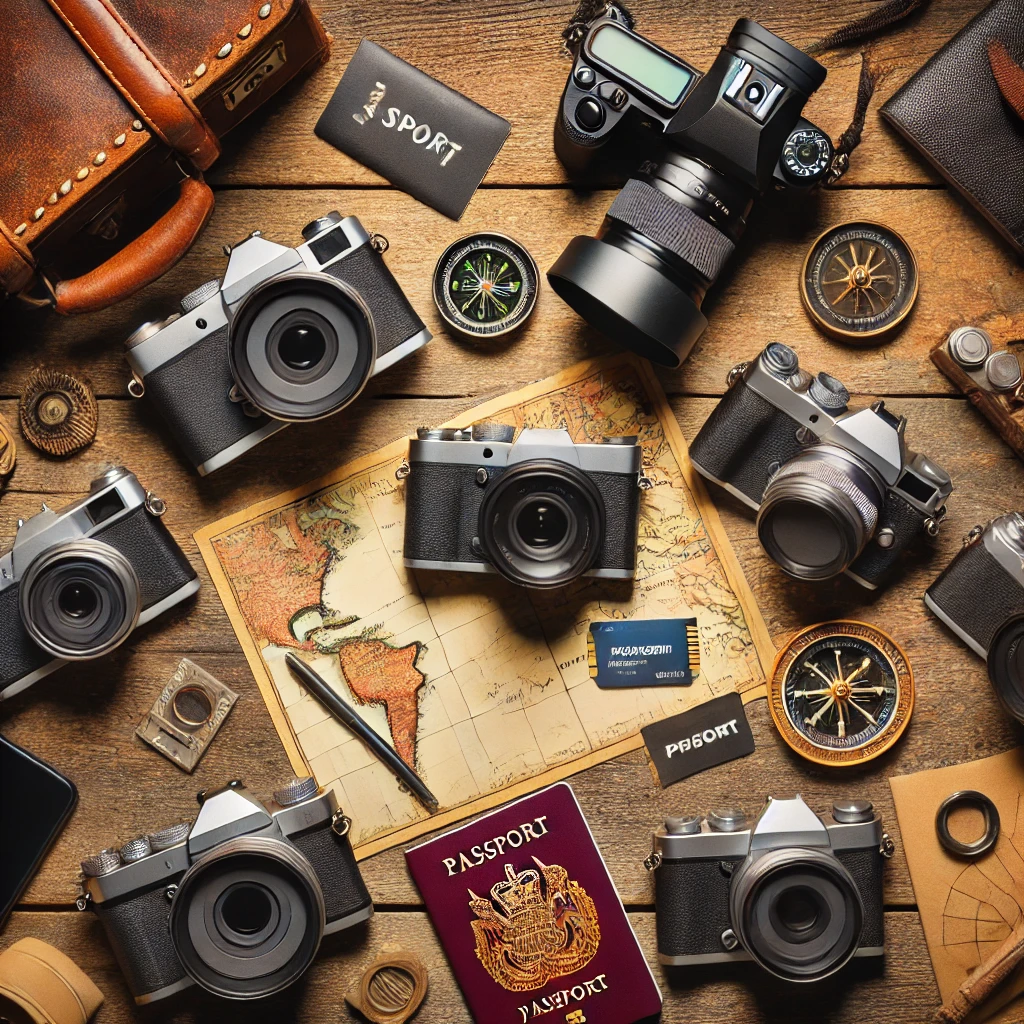
Budget-Friendly Options
1. Canon PowerShot SX620 HS
- Description: The Canon PowerShot SX620 HS offers impressive versatility with its powerful 25x zoom lens, allowing users to capture distant subjects with ease. It’s compact and lightweight, fitting easily in your pocket, and is ideal for travelers who want great photos without a hefty price tag.
- Pros: Compact, 25x optical zoom, Wi-Fi sharing capabilities for quick uploads.
- Cons: Limited manual settings, moderate performance in low-light conditions.
- Perfect For: Budget-conscious travelers looking for a versatile point-and-shoot option that’s easy to use and carry.
- Accessories:
- Protective Case: ( Buy Here )
- Extra Battery: ( Buy Here )
2. Sony Cyber-shot DSC-H300
- Description: The Sony Cyber-shot DSC-H300 stands out for its ergonomic design and impressive 35x optical zoom. With an accessible interface and light body, it’s ideal for travelers who want decent image quality with the convenience of a point-and-shoot.
- Pros: High zoom, easy handling, affordable.
- Cons: Basic controls, lacks features like Wi-Fi connectivity and advanced shooting modes.
- Perfect For: Casual travelers and beginners who want an easy-to-operate camera.
- Accessories:
- Memory Card: ( Buy Here )
- Mini Tripod: ( Buy Here )
3. Panasonic Lumix FZ80
- Description: A budget powerhouse, the Panasonic Lumix FZ80 features a powerful 60x zoom lens and 4K video capability, making it a versatile choice for those interested in both photos and videos.
- Pros: 4K video recording, excellent zoom, budget-friendly.
- Cons: Bulky design, struggles in low-light conditions.
- Perfect For: Adventure-loving travelers who want to capture both photos and videos at an affordable price.
- Accessories:
Mid-Range Options
4. Sony Alpha a6000
- Description: The Sony Alpha a6000 is a favorite among travelers and photography enthusiasts alike for its portability, fast autofocus, and high-quality images. Despite its compact size, it offers exceptional detail and impressive speed, ideal for capturing fleeting travel moments.
- Pros: Lightweight and portable, 24MP image quality, fast autofocus.
- Cons: Lacks 4K video, no weatherproofing.
- Perfect For: Travelers looking to upgrade from a smartphone or compact camera to a mirrorless option with more flexibility.
- Accessories:
- Extra Lens: ( Buy Here )
- Padded Camera Bag: ( Buy Here )
5. Canon EOS M50 Mark II
- Description: The Canon EOS M50 Mark II is one of the best options for those seeking a high-resolution mirrorless camera with video capabilities. It’s lightweight, has a comfortable grip, and produces crisp images, making it ideal for intermediate travelers and vloggers.
- Pros: 4K video, Dual Pixel autofocus, compact.
- Cons: Short battery life, limited lens selection.
- Perfect For: Beginner to intermediate photographers and vloggers.
- Accessories:
6. Fujifilm X-T200
- Description: The Fujifilm X-T200 offers excellent color quality, a lightweight design, and a user-friendly touchscreen, making it a popular choice for both photographers and videographers.
- Pros: Great color reproduction, tilting touchscreen, 4K video capability.
- Cons: Limited lens selection, not weather-sealed.
- Perfect For: Travel vloggers and photographers who value vibrant colors and video options.
- Accessories:
High-End Options
7. Sony Alpha 7C
- Description: This compact full-frame camera combines Sony’s high-quality imaging with a travel-friendly size, offering superb detail, low-light performance, and a wealth of advanced features.
- Pros: Compact full-frame body, excellent low-light performance, customizable controls.
- Cons: Higher price, limited physical controls.
- Perfect For: Pro-level photographers who need a lightweight, high-quality travel camera.
- Accessories:
- Waterproof Case: ( Buy Here )
- High-Quality Lens: ( Buy Here )
8. Canon EOS R5
- Description: With stunning 45MP image quality and 8K video, the Canon EOS R5 is a top pick for professional travel photographers and videographers.
- Pros: 8K video, excellent image quality, great autofocus.
- Cons: Expensive, requires extra batteries for extended shooting.
- Perfect For: Professionals looking for the ultimate high-resolution travel camera.
- Accessories:
- Extra Batteries: Amazon Link
- Heavy-Duty Tripod: Amazon Link
9. Nikon Z7 II
- Description: Known for its fantastic image quality and dynamic range, the Nikon Z7 II is ideal for those seeking premium quality with robust build quality.
- Pros: Great for landscape photography, 4K video, excellent image quality.
- Cons: Heavier, high price.
- Perfect For: Advanced photographers and those exploring extreme environments.
- Accessories:
- Durable Camera Bag: ( Buy Here )
- ND Filter: ( Buy Here )
10. Leica Q2
- Description: The Leica Q2 is a luxury camera, beloved for its stunning fixed 28mm lens, compact build, and impeccable image quality.
- Pros: Premium quality, compact design, weather-sealed.
- Cons: High price, fixed lens limits versatility.
- Perfect For: High-end travelers and photography aficionados who prioritize style and quality.
- Accessories:
Comparison Table
Here’s an updated, comprehensive comparison table that includes all ten cameras featured in the guide, providing a side-by-side look at their key features, best use cases, and links for purchasing:
| Camera Model | Price Range | Key Features | Best For | Buy Link |
|---|---|---|---|---|
| Canon PowerShot SX620 HS | Budget | 20.2 MP, 25x Zoom, Wi-Fi | Beginners, casual photographers | Buy on Amazon |
| Sony Cyber-shot DSC-H300 | Budget | 20.1 MP, 35x Zoom | Casual travelers, easy handling | Buy on Amazon |
| Panasonic Lumix FZ80 | Budget | 18.1 MP, 60x Zoom, 4K Video | Budget-conscious adventurers | Buy on Amazon |
| Sony Alpha a6000 | Mid-Range | 24.3 MP, Fast Autofocus | Intermediate, mirrorless enthusiasts | Buy on Amazon |
| Canon EOS M50 Mark II | Mid-Range | 24.1 MP, 4K Video, Dual Pixel AF | Vloggers, intermediate photographers | Buy on Amazon |
| Fujifilm X-T200 | Mid-Range | 24.2 MP, 4K Video, Tilting Touchscreen | Vloggers, travel photographers | Buy on Amazon |
| Sony Alpha 7C | High-End | 24.2 MP Full-Frame, Compact | Professional photographers, compact quality | Buy on Amazon |
| Canon EOS R5 | High-End | 45 MP, 8K Video, Advanced Autofocus | Professional videographers, high-resolution photography | Buy on Amazon |
| Nikon Z7 II | High-End | 45.7 MP, 4K Video, Weather Sealed | Landscape and extreme environment photographers | Buy on Amazon |
| Leica Q2 | Luxury | 47.3 MP Full-Frame, Fixed 28mm Lens, Weather-Sealed | Luxury travelers, photography aficionados | Buy on Amazon |
Essential Travel Photography Tips: How to Make the Most of Your Camera

Capturing memorable travel photos is about more than just having the right equipment.
Knowing how to use your camera effectively and understanding basic photography principles can make a big difference.
Here are some essential tips to help you make the most out of your travel photography experience, ensuring you return home with beautiful, frame-worthy shots.
1. Master the Basics of Composition
- Rule of Thirds: Imagine your frame divided into a grid with two horizontal and two vertical lines. Place your subject where these lines intersect to create a balanced and visually pleasing composition. Most cameras and smartphones have a grid overlay to help with this.
- Leading Lines: Use lines in your surroundings – such as roads, rivers, or pathways – to guide the viewer’s eye toward the main subject of your photo. Leading lines add depth and interest to your shots.
- Framing: Look for natural frames within your environment, like archways, trees, or windows, to highlight your subject. Framing creates a sense of depth and draws attention to your focal point.
- Symmetry and Patterns: Symmetrical compositions or repeating patterns can add a sense of harmony to your photos, especially in architecture or nature shots. Balance symmetry with other elements to avoid making the image too static.
2. Adapt to Different Lighting Conditions
- Golden Hour: The hour after sunrise and the hour before sunset, known as golden hour, provides soft, warm light ideal for photography. This light adds a beautiful glow to landscapes, portraits, and cityscapes.
- Blue Hour: The period right after sunset, blue hour is ideal for capturing twilight scenes with a soft, blue-toned light. It’s perfect for cityscapes and landscapes, especially if you want to avoid harsh shadows.
- Harsh Midday Sun: Midday light can create strong shadows, which can be tricky. To make the most of this light, try photographing in shaded areas or use a polarizing filter to reduce glare and improve contrast.
3. Use Manual Settings for More Control
- Shutter Speed: Adjust your shutter speed depending on what you’re photographing. A fast shutter speed (e.g., 1/1000) freezes motion, which is great for action shots, while a slower shutter speed (e.g., 1/30) captures movement, such as flowing water or moving crowds.
- Aperture (f-stop): A lower f-stop (e.g., f/2.8) creates a blurred background, which is ideal for portraits and isolating subjects. A higher f-stop (e.g., f/11) keeps more of the scene in focus, which works well for landscapes.
- ISO: Keep ISO as low as possible to avoid noise, especially in low-light conditions. If you need more light in dark environments, increase ISO gradually, but be mindful that higher ISO settings can lead to grainy images.
4. Make the Most of Your Camera’s Features
- HDR Mode: High Dynamic Range (HDR) mode takes multiple shots at different exposures and blends them for a balanced photo. This mode is useful for scenes with both bright and dark areas, like sunsets or landscapes with a bright sky and dark foreground.
- Burst Mode: When photographing moving subjects or dynamic scenes, burst mode lets you take multiple shots in rapid succession, ensuring you capture the perfect moment. This feature is especially useful for street photography, wildlife shots, or sports.
- Exposure Compensation: Adjust exposure compensation to make photos brighter or darker. This is particularly helpful in tricky lighting situations, such as backlit portraits, where you want more control over the brightness.
5. Plan Your Shots for Iconic Locations
- Research Ahead: Use resources like photography blogs, Instagram, and travel guides to find iconic photo spots at your destination. Check sunrise and sunset times, and consider visiting popular places during off-peak hours for fewer crowds and better lighting.
- Consider the Weather: Weather conditions can greatly affect your photos. A sunny day offers vibrant colors, while overcast skies provide soft, diffused light that’s perfect for portraits. Use weather apps to plan accordingly and be flexible with your schedule if conditions change.
- Play with Perspectives: Capture well-known landmarks from unique angles to add a creative twist. For example, shoot from low to the ground, or find a high vantage point to capture a new perspective on iconic scenes. Experimenting with angles helps your shots stand out from typical tourist photos.
6. Keep Your Camera Settings Ready for Quick Shots
- Set Up Quick Access Presets: Many cameras allow you to save custom settings, such as one for landscapes and another for low light. By creating presets for different situations, you can quickly switch settings without missing a moment.
- Use Autofocus for Moving Subjects: For action shots, like bustling streets or animals in motion, set your camera to continuous autofocus (AF-C or AI Servo) so it adjusts focus as your subject moves, keeping them sharp in your shot.
- Enable Image Stabilization: Image stabilization reduces camera shake, helping you capture sharp photos, especially in low light or at slower shutter speeds. Some cameras have built-in stabilization, while others require a stabilized lens.
7. Edit and Organize Your Photos
- Basic Editing: After your trip, use basic editing tools to enhance your photos. Adjust brightness, contrast, shadows, and color balance to bring out the best in your images. Software like Lightroom or mobile apps like Snapseed offers easy editing tools that can make your photos pop.
- Keep a Backup: Ensure you have a secure backup of your travel photos. Cloud storage options like Google Photos, iCloud, or an external hard drive can help you keep your memories safe, even if you lose your camera or memory card.
- Organize by Location or Event: Organizing your photos by location or event makes it easier to find and share specific images. This organization also helps you relive your travels in a structured way and simplifies future searches.
8. Stay Mindful and Enjoy the Moment
- Take Breaks from the Camera: While it’s tempting to capture everything, take moments to put the camera down and enjoy the experience fully. Balance documentation with immersion to truly appreciate the places you visit.
- Practice Patience: Some of the best travel shots come from waiting for the perfect moment – a crowd to disperse, a cloud to pass, or the light to soften. Take your time to find unique perspectives and the right timing for each shot.
- Tell a Story with Your Shots: Capture a mix of wide shots, close-ups, and candid moments to create a visual story of your journey. Include details like local food, people, architecture, and nature to create a rich narrative that goes beyond typical snapshots.
By following these tips, you can elevate your travel photography and capture stunning images that tell the story of your adventures.
Whether you’re a beginner or an experienced photographer, keeping these guidelines in mind will help you maximize your camera’s potential and bring home photos you’re proud to share.
Additional Tips for Traveling with a Camera
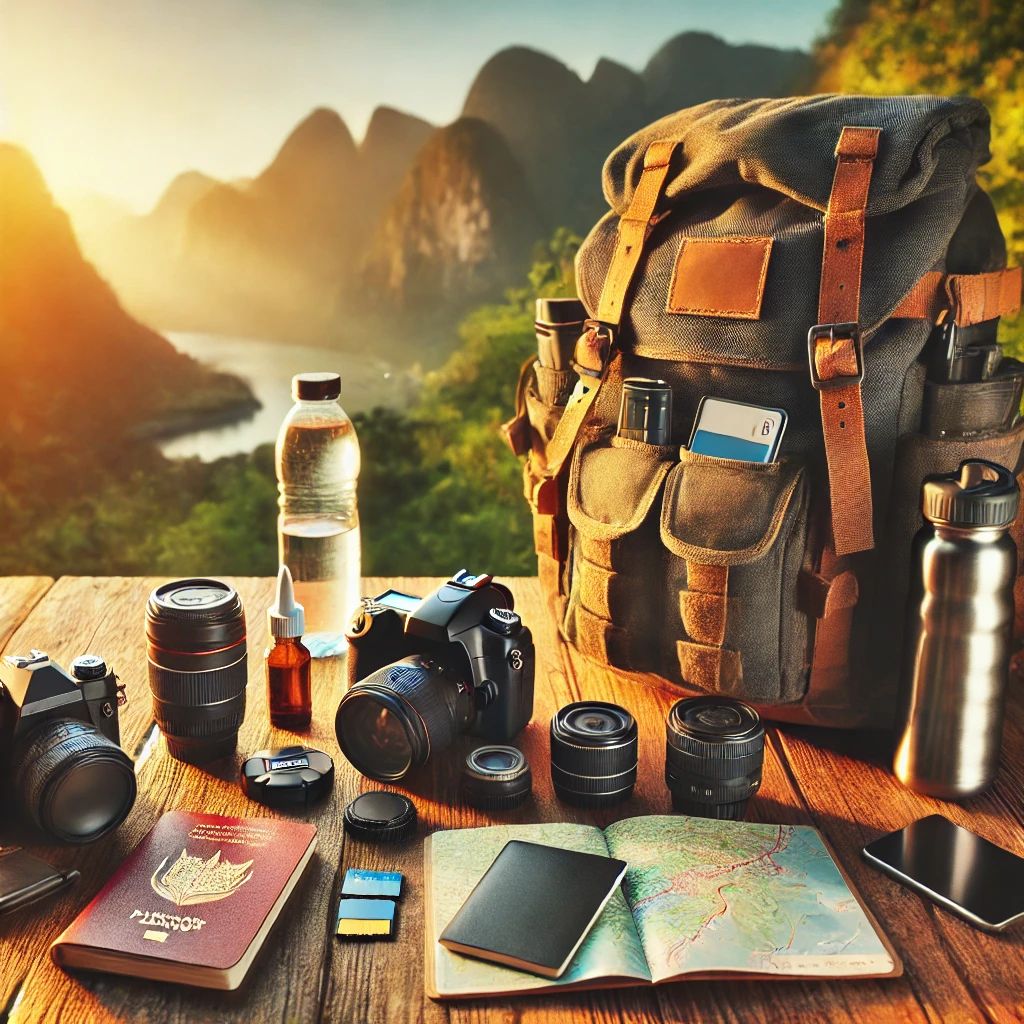
- Protection: Consider a padded case for your camera and rain covers for lenses. For rugged adventures, weatherproof or waterproof cases can keep your gear safe.
- Essential Accessories: Extra batteries, high-speed memory cards, and a lightweight tripod are essential for uninterrupted shooting.
- Extra Tip: To keep your camera safe from bumps and theft, always wear a sturdy camera strap and keep it close to your body in crowded areas.
Conclusion
Choosing the best travel camera can make all the difference in preserving your adventures with clarity and detail.
This guide offers options for every budget and type of traveler, so whether you’re just starting out or are an experienced photographer, you’ll find a perfect match.
Ready to capture your travels?
Share your experiences below or let us know if you have questions on any specific camera!
Frequently Asked Questions (FAQ)
To help answer common questions about choosing and using travel cameras, here’s a handy FAQ section to guide you.
1. What type of camera is best for travel – DSLR, mirrorless, or compact?
- DSLR: DSLRs offer excellent image quality, manual control, and a wide range of lenses, but they tend to be bulkier and heavier, which can be inconvenient for travel.
- Mirrorless: Mirrorless cameras have become popular among travelers due to their compact size, interchangeable lenses, and advanced features. They offer nearly the same quality as DSLRs but in a more portable package.
- Compact Cameras: These are lightweight, easy-to-use cameras that fit in your pocket. They’re perfect for casual travelers or those who prioritize convenience over professional-grade image quality. Some high-end compacts, like the Sony RX100 series, can deliver impressive quality in a very small form factor.
Verdict: If you’re looking for professional-level photos, go for a mirrorless or DSLR. If portability is a priority, compact cameras are a great choice.
2. Do I need a camera with a high megapixel count for travel photography?
- Not necessarily. While higher megapixels allow for more detailed images and better cropping options, anything above 16–20 megapixels is generally sufficient for travel photography. Higher megapixels are more critical if you plan to print large photos or frequently crop your images. For social media and online sharing, cameras with around 20 megapixels provide excellent quality without overly large file sizes.
3. Is it worth buying a weather-sealed camera?
- If you’re traveling to environments with unpredictable weather – like beaches, mountains, or rainforests – a weather-sealed camera is a smart investment. Weather-sealed cameras resist dust, moisture, and some light rain, helping protect your gear and giving you peace of mind in challenging conditions. However, if you mostly travel in urban or indoor settings, weather sealing may not be as essential.
4. How many lenses should I bring for travel?
- For most travelers, 1-2 lenses will suffice. A versatile zoom lens (e.g., 18-135mm or 24-70mm) covers wide to medium telephoto ranges, allowing you to capture both landscapes and close-ups. For mirrorless or DSLR users, a prime lens like a 35mm or 50mm can be a great addition for low-light shots and street photography. Avoid bringing too many lenses, as it adds weight and bulk to your bag.
5. What camera settings should I use for travel photography?
- Landscape Photography: Use a smaller aperture (e.g., f/8 to f/16) to keep the entire scene in focus and shoot in daylight for optimal lighting.
- Low-Light or Night Photography: Use a tripod, widen the aperture (e.g., f/2.8 or lower), and set a longer exposure time to capture more light. Adjust ISO only if necessary to avoid noise.
- Street Photography: Set a fast shutter speed (e.g., 1/250 or higher) to capture action, and use aperture priority mode to balance depth of field with exposure.
6. How do I protect my camera while traveling?
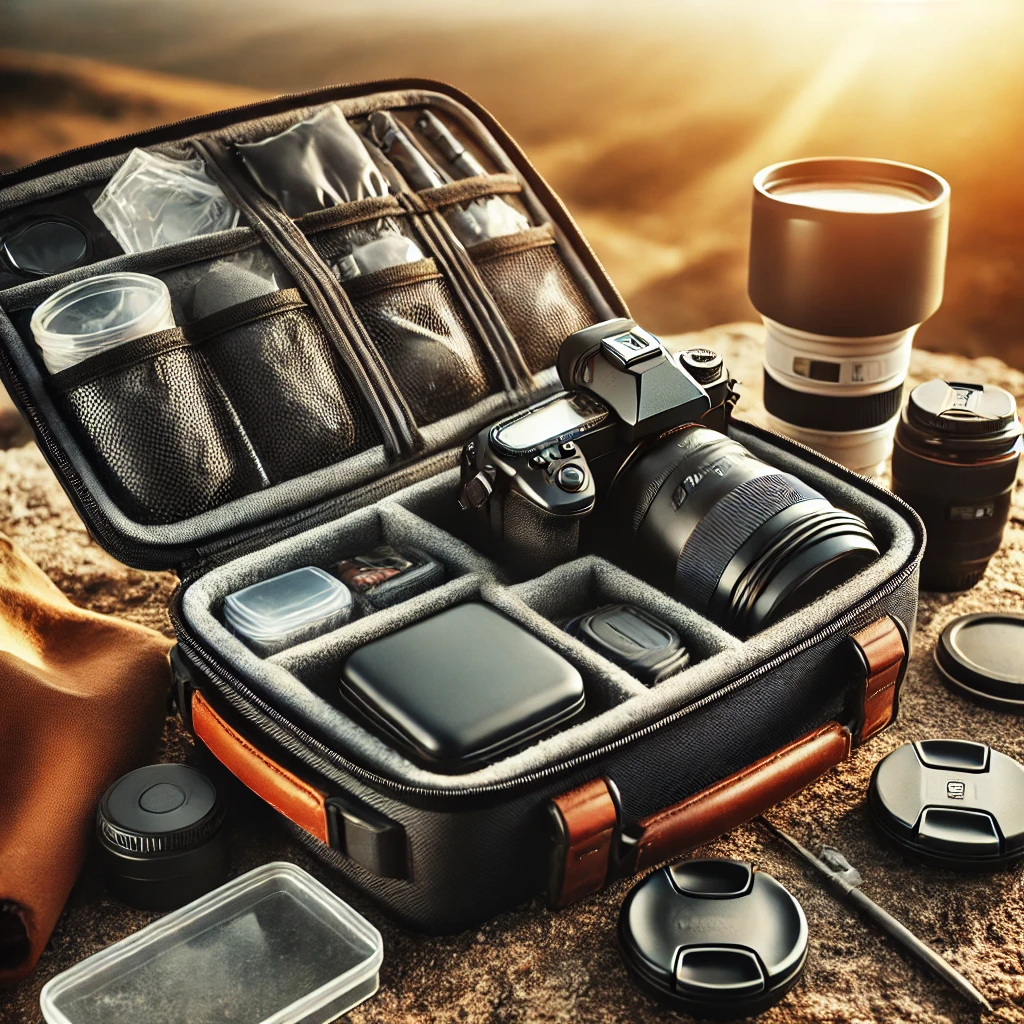
- Use a padded, weather-resistant camera bag to protect your gear from bumps and light rain.
- Invest in lens covers, UV filters, and a lens cleaning kit to keep your lens and sensor safe from dust and scratches.
- Consider a rain cover or a waterproof case if you’ll be in wet conditions, and always use a camera strap to avoid accidental drops.
7. Should I buy extra batteries and memory cards?
- Yes, it’s highly recommended to carry at least one extra battery and multiple memory cards when traveling. Many travel cameras, especially mirrorless models, tend to drain batteries quickly. Extra memory cards allow you to capture a large number of photos without worrying about running out of space, which can be a lifesaver during long trips or adventurous excursions.
8. What accessories are essential for travel photography?
- Tripod: A lightweight tripod is great for landscape, night, or low-light photography and helps keep your images sharp.
- Lens Cleaning Kit: Keeps your lens and sensor free from dust, dirt, and smudges, essential for clear photos.
- Portable Charger: Many cameras can be charged via USB, so a portable power bank can be convenient if you’re on the go.
- Spare Batteries & Memory Cards: To ensure you’re never out of power or storage space.
- Protective Camera Case: A durable case or padded bag for safe transport.
9. Is a smartphone enough for travel photography?
- Today’s smartphones come equipped with advanced camera capabilities that can be suitable for casual photography, especially for those sharing on social media. However, a dedicated camera provides better low-light performance, higher resolution, more creative control, and greater flexibility with lenses, making it a better choice for those looking to capture high-quality travel photos. If photography is a major part of your travel experience, investing in a dedicated camera is well worth it.
10. Should I insure my travel camera?
- Insuring your camera gear can be a wise decision, especially if you’ve invested in high-end equipment. Travel camera insurance covers theft, damage, and sometimes even accidental loss. Many insurance providers offer specific plans for photographers and travelers, or you can add coverage to your travel insurance plan. This added protection offers peace of mind, especially when traveling to busy or remote areas where accidents or theft are more likely.
Check These Out too!
The 10 Best Travel Backpack for Women: Stylish, Functional, and Lightweight!
Top 10 Best Travel Credit Card with No Annual Fee for 2024
Amazon Associate I earn from qualifying purchases.

